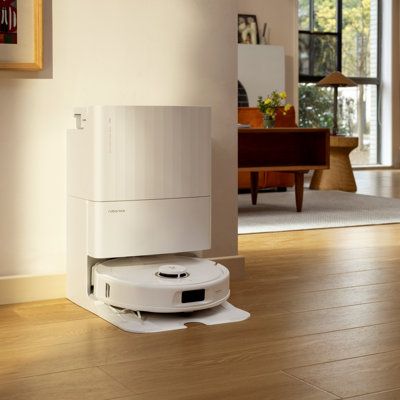Welcome to the decade of adulting. For a lot of us, our 20s are a pivotal moment in time when reality hits hard. We’re no longer kids free from care. Instead, we’re officially adults trying to govern a Rolodex of responsibilities, while standing at a muddied crossroad between where we are and where we want to be. Rest assured, our 20s are supposed to be confusing. It’s perfectly fine to screw up – so long as we learn from our mistakes.
For myself, the transition from school to adulthood has been an exhaustive eye-opener, and I’ve already begotten my fair share of slip-ups. I’ve experimented with questionable fashion trends, I’ve been on even more questionable dates, and I’ve trusted the wrong kind of people. While most of the offshoots are salvageable, there are some that aren’t, particularly when it comes to personal finance.
Let’s rewind to my early 20s. I majorly lucked out with a no-student debt status, jobs that funded my lifestyle, and the financial backing of my parents in case of emergencies. I was indeed comfortable, but I wasn’t vigilant about my expenditure, and I knew I’d come to regret it one day despite any external warning. As I later welcomed my mid-20s, I underwent quite the personal renaissance, and it finally sunk in that I needed to craft a more prolific approach to both spending and saving.
I suppose the reason I was so idle about my finances in the past was because I never bothered to educate myself properly. I’d write it off as something too complicated or iffy to conquer. Besides, that’s what financial advisors and accountants are for, right?
Wrong. Honestly, I look back at my younger self and cringe. These days, I now believe that there’s nothing more empowering than feeling entirely self-sufficient. But like the old me, there are still too many gals out there that shy away from market reports and economic terminology because they consider it to be “a man’s world”. The reality is women can’t afford to be oblivious. We live 6-8 years longer than men, retiring with two-thirds as much money. We have to look out for ourselves and be financially savvy right now so as not to fall even further behind.
To help get you going, I’m sharing five smart things to do with your money in your 20s.
1. Create your own budget
I used to hate budgeting because it would shed light on facts I didn’t need to know – like how I overspent on scented candles. When I got my first job, I was too excited by the prospect of earning my own money, which made me privy to unnecessary spending. I knew I needed to put a cap on it, and budgeting was the only method that encouraged more self-control in this realm.
If you’re stuck on how to go about it, I recommend the 50/30/20 rule since it’s a pretty simple, systematic way to monitor your outgoings more closely. According to the rule, 50% of your take-home pay goes to needs (think bills, food, transportation, etc.), 30% goes to wants (like new clothes or travel), and 20% goes to your future (debt payments above minimums, saving and investing). It’s okay to adjust the numbers here and there, but try to stick to it as much as you can.
2. Get that employer match
One of the greatest perks of having a job is the 401(k) employer contribution match if it’s available to you. In America, the most common type of 401(k) match is 50 cents on the dollar up to 6%. So if you put 6% of your paycheck into your 401(k), your employer will then put in 3%. As such, your employer is essentially handing you a 50% return on your money. Winning.
3. Pay off high-interest debt
If you’re looking to minimize or avoid debt, it’s worth taking advantage of your employer’s 401(k) match to pay off balances that have an interest rate of 5% or more. Anything with an interest rate under 5%, like a federal student loan, is generally okay if you continue paying the minimum until it’s fully paid off.
Ellevest suggests adopting the “debt avalanche” payoff tactic, which is intended to save you the most on interest. First, list all your balances in order from the highest interest rate to the lowest. Then, if you can, pay extra on the balance with the highest interest rate while paying the minimum on the others. Once that’s paid for, you can continue checking off the rest of the list in a similar fashion.
4. Save for emergencies
When I was living in the States, I would often wonder if I had enough money set aside for a last-minute airfare in case anyone back home in England was unwell. Even though it was an unpleasant thought, I needed to be pragmatic. Thankfully, I never had to buy that ticket, but it does highlight the importance of having an emergency fund readily available, whatever that emergency may be.
If you have a reasonably stable income, a useful way to prepare an emergency fund would be to save somewhere between three and six months’ worth of take-home pay. It’s also best to keep your fund in a high-yield savings account that’s FDIC insured and that you can access when you need to. More on what an emergency fund is and how to calculate your number here.
Don’t have an emergency fund set up– yet? Ellevest can help you set one up for free and help you reach all of your money goals. Sans judgment, finance jargon, and trust issues. Get into it here.*
5. Get started investing
Investing is merely another way to generate income. It might seem scary at first, but we have little reason to avoid it. Nowadays, companies provide us with more accessible, easy-to-follow resources to get started, and many of them don’t require a minimum amount to do so. Among said companies is Ellevest, which is a prime site to turn to, especially if you’re a total newbie to the world of finance. Before investing, identify your goals. For example, while it might not seem all that relevant in my 20s, a comfortable retirement is a vital long-term goal that I’ve made for myself, and so I can capitalize on investments accordingly.
Don’t have an emergency fund set up – yet? Ellevest can help you set one up for free and help you reach all of your money goals. Sans judgment, finance jargon, and trust issues. Get into it here.*
Ready to invest…
Here’s one way to do it with Ellevest. You can get a personalized portfolio in under 10 min. And it’s made by women, for women, with portfolios that allow you to invest in companies that support women. *

Pay yourself first: Your new resolution for 2019. Make sure a cut of every paycheck goes straight to your retirement or savings account and does not pass go.
Here are more personal finance topics for you…
What Is An Emergency Fund and How Much Should Be In It?
Make 2019 The Year You Get Started Investing
3 Reasons Why You Need a Roth IRA- Even If You Have a 401(k)
Disclosures: We’re excited to be teaming up with Ellevest to start this conversation about women and money. We may receive compensation if you become an Ellevest client.







